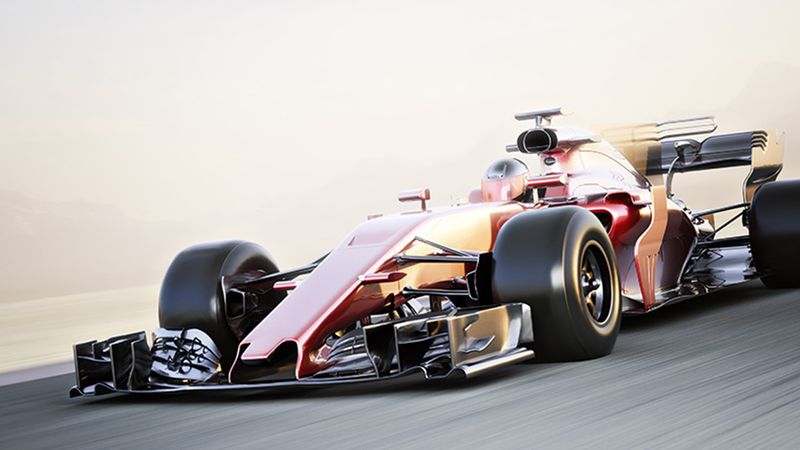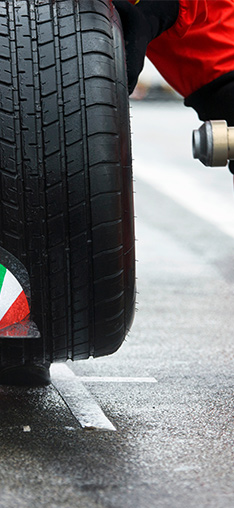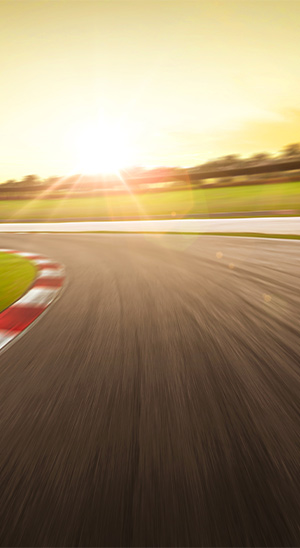Pneumatics In Motorsport
Using compressed air in automotive manufacturing is nothing new, and almost every process in manufacturing a car today relies on pneumatics. From cutting and machining parts and panels to various lifting, clamping and stamping operations, pneumatic tools regularly assist.

Pneumatics In Motorsport
This article was first published on
www.rowse-pneumatics.co.ukUsing compressed air in automotive manufacturing is nothing new, and almost every process in manufacturing a car today relies on pneumatics. From cutting and machining parts and panels to various lifting, clamping and stamping operations, pneumatic tools regularly assist – or entirely replace – the work of human hands. Particularly important in lifting and positioning, pneumatically powered robotic arms also use pneumatic sprayers to clean and paint the vehicles, and compressed air to blow up the tyres. Vacuum generators provide powerful suction in gripping processes and welding guns are now servo-pneumatically driven. Increasingly, pneumatics is also powering 3D printing systems, producing parts by the process of additive manufacturing.

Pneumatics also plays an important role in motorsport. From pneumatic springs in motorcycles to pneumatic suspension in Formula 1 racing cars, engineers are finding that compressed air (actually nitrogen gas) offers significant advantages over metal springs. More specifically, it can provide the precise control and ability for valves to follow high lift cams for a shorter period than the time it takes for metals to attain competitive speeds. It’s powerful enough to handle racing grade suspensions, not to mention the robust force required for a race car to corner at 100mph or more.
On the other hand, a pneumatic cylinder is flexible enough to provide bump-filtering and the smooth ride that drivers and motorcyclists demand. Changing the engine tuning is also enormously simplified by altering the air pressure. Higher air pressure will provide race tuning with a hard suspension, while lower air pressure softens the suspension for more comfort. In reality, the process is not quite that simple, but it opens up a wide range of possibilities for engineers, especially in reducing the costs for application to a wider market. Pneumatic suspension isn’t cheap. While this may not be a consideration for motorsport or the luxury car market, it means the technology is not yet affordable for the ordinary car.
Pneumatics On The Racing Circuit
Pneumatic valve actuation was first introduced to racing by Renault in the mid-80s and generally adopted by Formula 1 in the 1990s. The existing technology of metal springs was replaced with a pneumatic bellows, which made valve assembly faster and more powerful. The greatest advantage of this for very high-speed engines is that a compressed gas column’s natural frequency is about eight times that of an equivalent metal spring. Further, it won’t suffer diminished damping or failure through fatigue, nor is the valve lift constrained by stress range limits.
Another feature of pneumatics in motorsport is its critical function in the pit. Every race car team strives for faster pit stops, and manufacturers have developed high-speed pneumatic wheel guns, pneumatic impact wrenches and other accessories to aid them in shaving seconds off their time. Companies such as Dino Paoli Srl have been innovating pit-stop solutions since 1968, providing wheel guns that are customised to the demands of individual championships. There'll also be powerful compressors in the pit, probably some backup compressed air canisters and gantries for the long air lines.
Camozzi Group
In 2022, pneumatics specialist Camozzi announced a sports and technology partnership with racing car managers Sauber Motorsport to sponsor Alfa Romeo’s Team ORLEN. Areas of collaboration include design and process modelling, mechatronic systems, developing new materials and additive manufacturing. The new venture is described by the two companies as based on their “commitment to delivering excellence through cooperation and shared synergies”. It first went public at the Bahrain Grand Prix in March, where the F1 Team ORLEN came in sixth, driven by Valtteri Bottas. Camozzi branding will be featured on the team’s C42 cars and other assets, as well as in the team’s garages.
This isn’t the first appearance for the Camozzi Group in Formula One racing. They first entered motorsport in the 1980s, successfully sponsoring the Arrows Grand Prix International team, whose leading drivers were Thierry Boutsen and Gerhard Berger. In 1991 Camozzi left the Arrows for Scuderia Italia, followed in 1993 by a move to sponsoring McLaren and Ayrton Senna. In the final year of their sponsorship, Camozzi achieved the peak of their success with McLaren, when Mika Häkkinen won the 1998 world championship.
With such a successful track record in Formula One, Camozzi’s expertise makes the company a natural match for Sauber and Team ORLEN. The Group is a global manufacturer of products for high-tech industrial automation, and Camozzi pneumatic components are used in a wide range of sectors for state-of-the-art applications. It’s important to note in this regard that Camozzi is the manufacturer of the world’s largest 3D carbon and composite printer, while Sauber Technologies operates Switzerland’s largest 3D printing machine facility. Sauber Technologies is another division of the Sauber Group, and is committed to developing the company’s motorsport expertise for applications in the wider world.
The Camozzi/Sauber partnership agreement also includes a joint R&D initiative involving the Sauber Technologies HQ in Switzerland and the Camozzi Research Centre in Milan. This will promote the crossover of advanced precision pneumatics and technological innovations in a mutual exchange of knowledge and talent between the two companies. Both companies are planning to set up technician traineeships for engineers, in order to facilitate free sharing of information in their areas of collaboration.
Festo
Camozzi isn't the only pneumatics manufacturer on the racing circuit. In a different field, Festo have played an important role in the development of a race car that can be driven with hand controls. Team BRIT, a British motorsport team, have been working for some years in conjunction with Slovenian company MME Motorsport. They're developing a racing car flexible enough to be driven by people of all physical abilities.
This means that a hand control system can be mounted on a specially adapted steering wheel, so that the clutch, gears, brakes and accelerator can all be activated by levers as well as pedals. The hand controls allow drivers to manage all the required functions while keeping both hands on the wheel. It’s a very flexible system that can be adapted for the requirements of different drivers. A conventional steering wheel can be put in to replace the levered one, and the pedal controls used rather than the hand levers. The hand control system seamlessly combines electronics with pneumatic and hydraulic technology, so that every driver on the track is equal.
The control unit uses Festo automation technology to manage the clutch, gears and brakes, with a hydraulic brake system governed by proportional pneumatic controls. This enables the brakes, mounted on both front and rear axles, to be separately operated. A proportional pneumatic cylinder is used to engage and disengage the clutch, and the sequential gearbox is also controlled by means of a pneumatic cylinder. Team BRIT have successfully fielded a team of drivers with diverse abilities and are aiming to compete in the Le Mans endurance drive. In 2022, their cars include a McLaren for the British GT Championships, an Aston Martin and a BMW, all fitted with the hand control system.

How Pneumatics In Motorsport Benefits Other Drivers
The new Festo/Team BRIT hand controls are set to have a wider impact than just the world of motorsport. Team BRIT already has physically impaired veterans amongst its drivers, and what they learn in practice will also be used in theory to programme driving simulators. There is future potential for the system to be installed in ordinary road vehicles, which could eventually have a big impact on driving for the less abled.
A further and more surprising aspect of Formula 1 design is the educational challenge initiated by the non-profit company ‘F1 in Schools Ltd’. This programme offers an exciting educational experience for students aged 9 to 19, stimulated by the appeal of F1 racing and promoting Formula 1 to a youth market. The teams work together, using their CAD software skills to analyse and design miniature F1 cars powered by compressed air. Once they are satisfied with their designs, students then manufacture them using CAM software and a CNC router.
The 1/20 scale models are built with balsa wood and a canister of compressed gas (usually CO2), so they’re very fast. The models are tested exhaustively in wind and smoke tunnels for their aerodynamic properties. In the final challenge, student teams race their cars against each other, attaining speeds of 68 mph or more. After months of research and design work, the 20-metre track race may be over in a second or less. But successful competitors get to meet and mingle in the real world of Formula 1. The F1 community is fully involved in the challenge, welcoming students into their factories and racetrack paddocks. Some even make it onto the rostrum!
As the combustion engine begins gradually to be phased out, compressed air is going to take on a greater role in automotive design and manufacture. Pneumatics in motorsport is the most visible and exciting area of these new developments, but it’s set to spread its influence much further afield in the future.